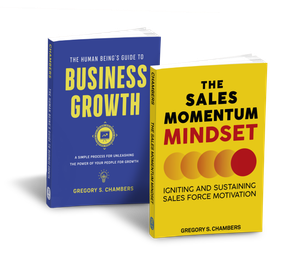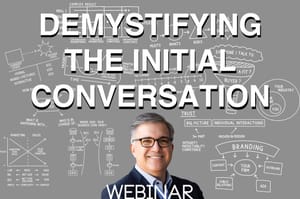5 Tips For Starting a Google B2B Adwords Campaign
5 Tips For Starting a Google B2B Adwords Campaign

(a version of this article appeared in Strictly Marketing Magazine, May/June 2016)
I am talking to the director of marketing at GoLeads, an Omaha based database marketing firm, discussing the journey a buyer goes on when making a decision. On our big whiteboard of ideas, it's not a surprise to see search engines listed. Actually, it wasn’t a surprise to see Google listed. (Who says search engine these days?) With Google making up at least 65% of total search volume as of late 2015, there’s a good chance that your buyer is going to use it at some point in the search process, and that’s why you should consider, or probably are considering, using Google Adwords to promote your products and services.
As a long time Adwords user and past Google Partner, I have some hard-won advice for you as you incorporate Adwords into your marketing mix. Five ideas that will keep you within budget and shorten the amount of time it takes to start producing results from the channel, because once you tap into the massive flood of Google users, if you’re not careful, your budget could be gone and you’ll have nothing to show for it.
- Before you start a campaign, finish it on paper.
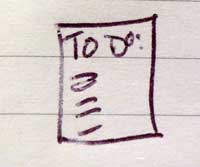
What I mean by that is that before you start spending money on the channel, you need to know how your company can tell if the campaign is a success. Do you need leads? Do you need calls? Do you need online traffic that leads to online signups? You need to have an idea of what success looks like before you chase it. A big part of that chase is going to be tracking. If you have an idea of where you want to be in the future, start with where you are today. I have firms that track phone calls, new CRM entries, online signup sheets, or price quotes. For those of you that are new to the channel, keep tracking simple. A rough idea of how it’s working is better than no idea, to start.
- Plan for three budget phases.
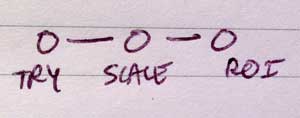
Any good management team wants a static budget that produces leads immediately, but real life insists that your budget will go through three phases: Experimenting, scaling, and optimizing for ROI. In the experimenting phase, you’re going to invest 80% of the budget into finding search phrases that work. Small controlled experiments. Once you have phrases that seem promising, you’re going to scale the experiment to see where it breaks. Most phrases break either when you discover the initial win was a one-time victory, or it breaks when the volume of that phrase doesn’t meet planned objectives. Once you have phrases that work, you’ll optimize the budget. Here’s a hint on how to set a budget. Start by finishing this sentence, “if you walked up to me with a qualified lead, I’d pay X.” For example, “. . .I’d pay $1,000, and I need 10 new leads a week so I’m going to budget $10,000 a week to start.” That budget number will go through the three phases, experimenting, scaling, and optimizing.
- Stick to the Google Search to start.

When you are setting up campaigns in Google, you will be encouraged to expand your ad’s reach by selecting Search Network with Display or Search Network only. When you’re experimenting, start with the Search Network only, but go a step further and uncheck the Include search partners option. This is important in the early stages of your campaigns because new campaigns have a learning curve and you need all the data you can gather when you sit back and evaluate what’s happening. To get the most data, I suggest using Google Analytics in addition to the Google Adwords reporting tools for these evaluations. Once you get the phone to ring a few times, it helps to know which half of your spend is responsible for driving the activity.
- Clamp down on the match logic.
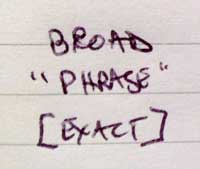
It’s almost impossible to guess the exact syntax a potential customer is going to be searching for. The searches could be early in the decision process like “how do you fix a squeak by front brakes,” to middle of the decision process like “average cost to replace brakes,” to the very end of the process like “best brake shop near Glenview Oakland area.” If you’re bidding on the word “brakes” you will end up paying for a lot of searches and clicks you don’t want. Google helps you by providing match logic that ranges from Broad, to Phrase, to Exact. I suggest starting with Exact matches on your phrases until you get an idea of the cost per click and the results from your campaigns. From there, once you find some phrases that work, move out to Phrase matching which will generate more matched searches, and then Broad matching, which will generate the most searches, and the highest spend.
- Be relevant to your buyer.
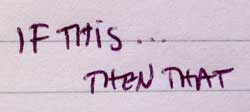
This last idea focuses on what happens once the prospect clicks on your search ad. Up to this point, you’ve set a goal, you’ve set a budget, you’ve selected phrases that fit, and now they’ve clicked. You’ve done a great job qualifying them, now send them to a page that makes sense. If I’m searching for “average cost to replace brakes” and your ad promised a “one stop shop for brakes,” don’t send me to the home page unless it has a giant “AVERAGE COST FOR BRAKES BY VEHICLE” or similar promise on it. Even if the ad didn’t mention prices, I am looking for a ballpark estimate. Don’t let me down. Your clicks will tell you the phrase they searched for and the ad they clicked on. Take a minute to trace their path and make sure the page they land on is relevant.As you’d expect, you’ll need more than just these ideas to make your Adwords campaigns rock and roll, but if you can incorporate the five concepts I’ve mentioned, you’ll save hours and dollars to start. Your buyers are using Google daily. It makes sense for you to invest in learning how to put Adwords into your company’s marketing mix. If you finish your campaign on paper before you start, if you understand the three phases of budget, if you reduce the number of spots your ads show, if you narrow the terms your ads show on and if you keep the buyer on a relevant journey, you are giving your company a fighting chance at driving cost effective leads and sales.
Good stuff.



